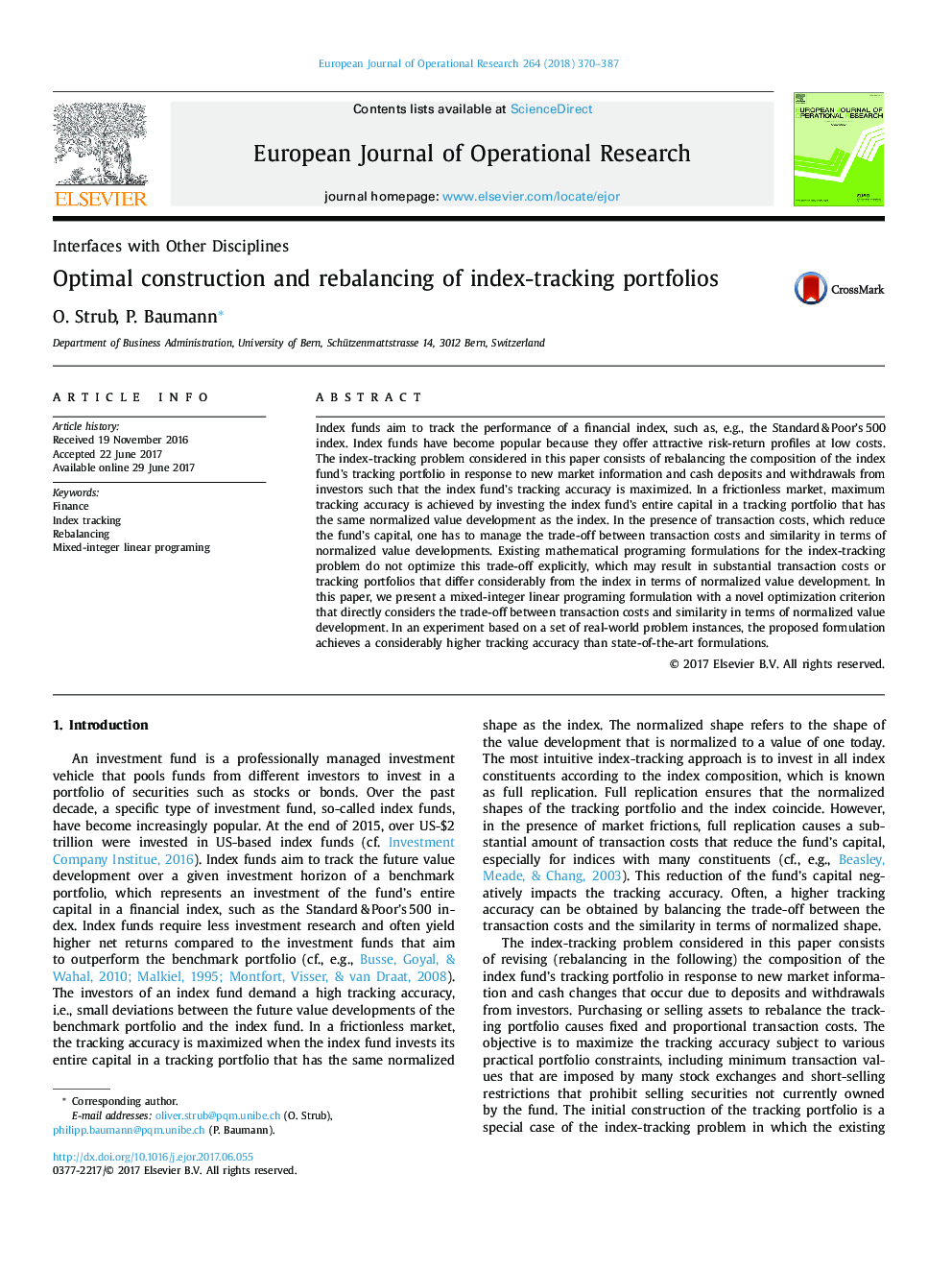| Article ID | Journal | Published Year | Pages | File Type |
|---|---|---|---|---|
| 4959464 | European Journal of Operational Research | 2018 | 18 Pages |
â¢Development of a novel optimization criterion for determining tracking portfolios.â¢Proof of desirable theoretical properties of the proposed optimization criterion.â¢Extensive computational analysis based on real-world data.â¢Outperformance of state-of-the-art index-tracking approaches.
Index funds aim to track the performance of a financial index, such as, e.g., the Standardâ¯&â¯Poor'sâ¯500 index. Index funds have become popular because they offer attractive risk-return profiles at low costs. The index-tracking problem considered in this paper consists of rebalancing the composition of the index fund's tracking portfolio in response to new market information and cash deposits and withdrawals from investors such that the index fund's tracking accuracy is maximized. In a frictionless market, maximum tracking accuracy is achieved by investing the index fund's entire capital in a tracking portfolio that has the same normalized value development as the index. In the presence of transaction costs, which reduce the fund's capital, one has to manage the trade-off between transaction costs and similarity in terms of normalized value developments. Existing mathematical programing formulations for the index-tracking problem do not optimize this trade-off explicitly, which may result in substantial transaction costs or tracking portfolios that differ considerably from the index in terms of normalized value development. In this paper, we present a mixed-integer linear programing formulation with a novel optimization criterion that directly considers the trade-off between transaction costs and similarity in terms of normalized value development. In an experiment based on a set of real-world problem instances, the proposed formulation achieves a considerably higher tracking accuracy than state-of-the-art formulations.
